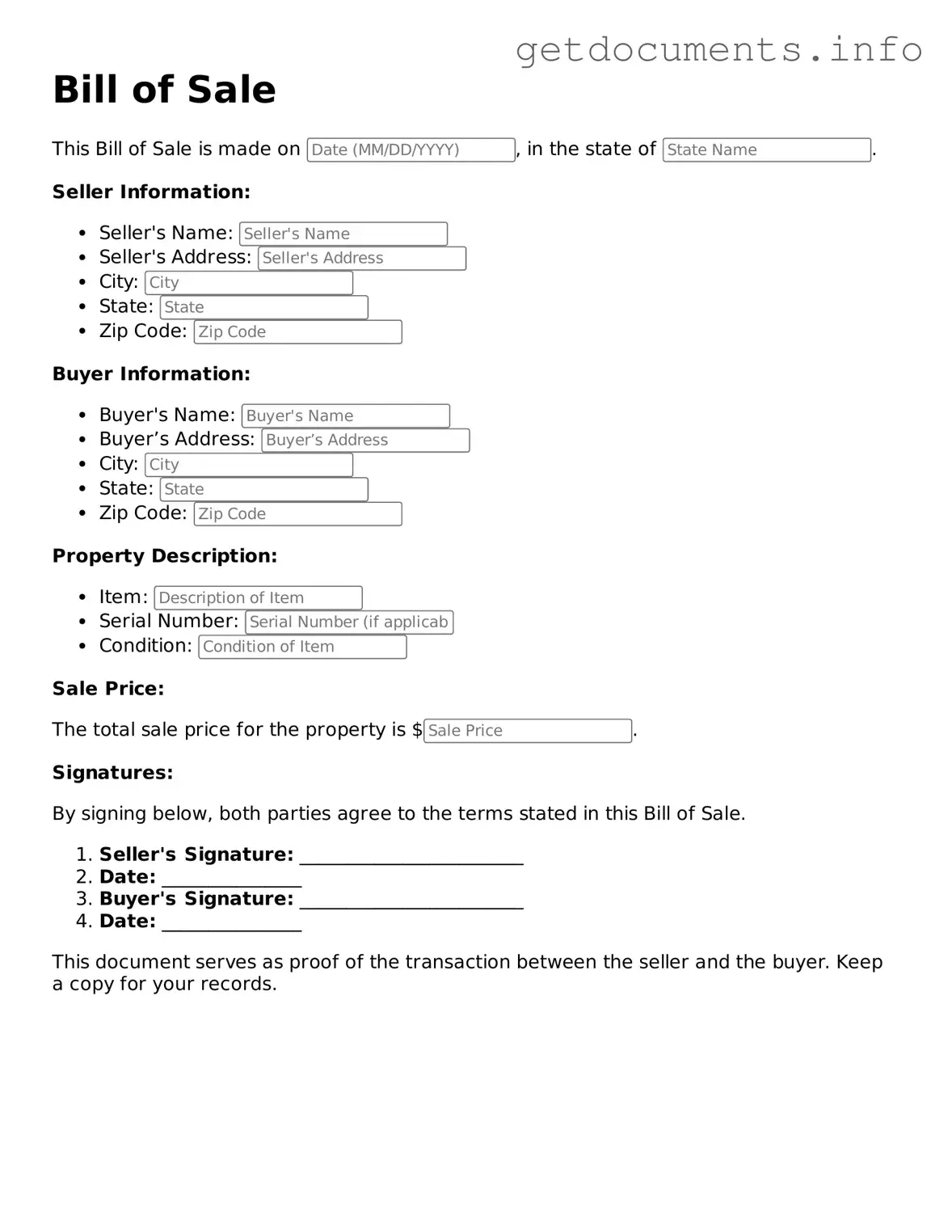The Bill of Sale form is an essential document that facilitates the transfer of ownership for personal property, whether it be a vehicle, equipment, or other tangible items. This form serves as proof that a sale has occurred, detailing key elements such as the names and addresses of the buyer and seller, a description of the item being sold, and the purchase price. It often includes additional information, such as the date of the transaction and any warranties or conditions that may apply. By documenting the sale, the Bill of Sale protects both parties by providing legal evidence of the transaction. In many cases, this form is required to register vehicles or transfer titles, making it a vital tool for anyone engaged in buying or selling personal property. Understanding the components and importance of a Bill of Sale can help individuals navigate the process more effectively, ensuring that their rights are safeguarded during the exchange. Whether you are a seasoned seller or a first-time buyer, having a properly completed Bill of Sale is crucial for a smooth transaction.
